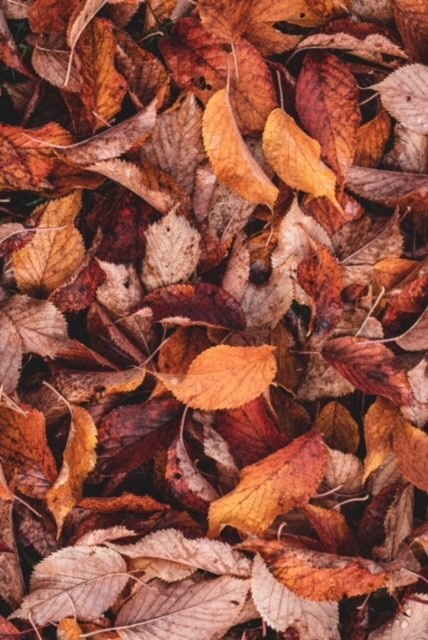
For many people, one of the best things about moving into their forever home is having the space to maintain their own garden. But now it’s late October, and we are hearing predictions that there may actually be some serious winter weather and temperatures in the metro Atlanta area this winter. Don’t let the work you have put into your garden this spring and summer go to waste! Instead, follow our tips to protect your fruit, vegetable, and flower plants from the sometimes unpredictable winter weather so that you can enjoy them again in the the coming warmer months.
Harvesting
Many of the plants in your garden could be sensitive to lower temperatures, so an important first step for you to take is to protect them from the coming cold. A few examples of tender vegetables that do not tolerate frost well and need to be fortified against the cold include tomatoes, pumpkins, squash, and beans. If you have ripe fruits and vegetables of these types, harvest them and find a good place to store them indoors. If there are vegetables present that are not ripe, you should cover them to keep them safe from the cold.
Other heartier plants will tolerate colder temperatures well and will continue to provide vegetables throughout the winter months. Brussels sprouts, broccoli, and kale, are all fans of frostier weather and will be fine left in the garden uncovered. They may even taste better if they have been exposed to a little bit of frost prior to harvesting. Collards, kale and other leafy greens tend to be sweeter in the late fall and early winter after we have started to see frosts in our area.
Watering

No matter what time of year and what weather you are experiencing, you always need to make sure your plants are fully hydrated. During drier periods of the fall you should continue to give them plenty of water, because this will help their root systems grow better. Stronger roots will lead to a heartier plant that is better able to sustain the potential damage from a colder winter.
However, before the temperatures drop below freezing, you should switch to a manual watering system for your plants. If you have an irrigation system, the water should be turned off to the supply lines before the first hard freeze. Usually our winters are mild, so you can simply disconnect the system from a hose spigot and allow the water to drain out. This year with colder temperatures predicted, you may want to follow instructions usually given in northern states, and blast all the water out with an air compressor, then bring all hoses inside for the winter.
Pruning
Perennials are generally only pruned in the spring. However, if you see any signs of disease, such as a powdery mildew on their leaves, go ahead and prune them back before the temperatures drop so that you can eliminate the issue. Wait until the foliage is gone, then prune them down to the stems, making sure to leave about three inches out of the ground. With water and mulch, they should grow back healthy in the spring. For plants that already appear to be healthy, you should not prune them until the spring, even if they appear to be overgrown. Pruning involves removing tissue and opening wounds, and if you do that now they may not have time to heal properly before the cold weather arrives. Pruning also stimulates a tree or shrub to start the growing process again, which you do not want as winter sets in. Any new growth experienced now is likely to be killed because it will not have time to harden or become woodier before the first frost.
Cleaning
Dormant areas of your garden should be cleared of any leaves or other plant debris. If the plants have any diseases or other problems, this will help you to start fresh in the spring rather than accidentally spreading the issues from the old plants to the new ones. Do not put this debris in a compost pile, because that could lead to you unknowingly spreading disease when you think you are fertilizing later. The best way to get rid of potentially diseased plants is to burn them, as this is a safe organic material for burning and it fully gets rid of the problem. If burning is not allowed in your area, whether due to HOA rules or burns bans during drier weather, you can dispose of diseased organic matter along with other yard waste in bags for the trash.
Mulching

Even if you’re not planting any cold weather plants during the late fall or winter, it’s a good idea to lay down a thick layer of mulch now. Mulch will prevent soil erosion during wetter weather, and also prevents the loss of valuable nutrients in the soil while also protecting against weed overgrowth. Your soil will absorb nutrients from the mulch throughout the winter, leaving it rich and healthy when it’s time to plant again in the spring. You should also add a thin layer of compost, or even manure, to the top of your garden beds. By spring, this will have given the soil a looser texture that is better suited for planting.
Depending on how many trees you have in your yard, you may not even need to purchase traditional mulch for your garden beds. If you have a lot of leaves beginning to fall, simply mulch them with an attachment on your lawn mower and spread the leaf litter onto your garden beds. This is a cheaper and much more eco-friendly approach, as it helps you in getting rid of your layers of fallen leaves while also providing protection and nutrients for your garden beds. Remaining leaves beyond what you use for mulch can be added to a compost bin/pile so the nutrients are preserved for the future.
Planting

Even if you had not previously planned to plant anything new this fall, you may want to consider some cold weather planting of cover crops, because this is a great way of protecting your soil. Some of you, especially beginner gardeners, may not be familiar with the term cover crop and are wondering what this means. Cover crops are the ready-to-sow seeds of fast-growing plants, most commonly legumes or grasses, that are planted in late summer or fall into empty or dormant garden beds. Throughout the winter, these crops do the hard work of renewing your soil health, adding essential organic matter and improving soil structure while also building fertility. Legumes in particular are known for fixing the nitrogen in the soil. You can think of cover crops as “green manure” which provides a living mulch that protects soils from winter erosion.
The most popular cover crops planted in our area are clover, peas, and winter rye, which all do wonderful if planted in north Georgia in the fall. However, if those crops don’t sound like the ideal plants for you, now is also a great time to plant root vegetables such as carrots, turnips, or beets, along with bulbous, flowering plants like garlic and shallots. You can plant cover crops anywhere, whether you are using smaller garden beds or large open fields. Clover in particular makes great ground cover and can even be used as part of your seasonal lawn maintenance.
Covering

Pay attention to the weather reports and in the event that we do see some snow predicted in our area, be prepared to cover small trees and deciduous shrubs for protection, especially if more than an inch or two of snow is expected. An easy way to do this is to drive stakes into the ground at all four corners around the plant, then wrap burlap or heavy plastic around the stakes. By securing the cover at the top, center, and bottom with twine, you will also be protecting against the possibility of heavy winds that could come along with winter storms.
If you have recently planted fruit trees, it’s a good idea to at least wrap the lower trunk of the tree with a pestproof tree wrap. This will keep mice and other rodents from gnawing on the tree’s bark during the winter, which could damage the growth of younger trees. This wrap will also help to prevent winter injury that can be common in late winter. The combination of warm, sunny days and still-freezing nights can cause the thin bark of young trees to split. Wrapping their trunks with tree wrap or otherwise shading them from the winter sun can prevent this serious bark injury.
General Garden Maintenance Tips
Here are a few additional steps to take around your garden:
- Empty all of your outdoor containers to keep them from cracking during the winter. Store them upside down to prevent water accumulation that can lead to freezing and busting.
- Mow your lawn as late into the fall as the grass continues growing. Grass left too long if/when snow arrives can develop brown patches in the spring.
- Scrub down and put away your garden tools. Many people even use vegetable oil to rub down their tools before storage to avoid rust.

